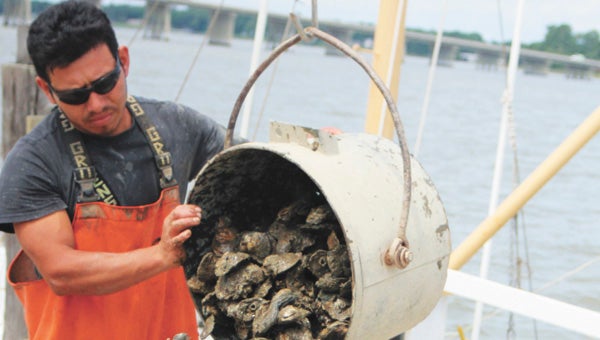Plant while the sun shines
Published 9:13 pm Tuesday, July 22, 2014

Dockside in the village of Eclipse on Tuesday morning, Santos Flores tips a bucket of oysters, handed up from the boat by Ben Johnson of Johnson and Son Seafood, onto a conveyor belt.
If it weren’t afloat on constantly changing waters, the “Mariner’s Cove” would be traveling a well-worn path as it coasts up to the Eclipse dock.
Presently, Robbie and Ben Johnson of Johnson and Sons Seafood are shoveling Tuesday’s oyster haul into large steel buckets.
One after another, Ben Johnson hefts the brimming buckets up to Santos Flores, who tips them onto a conveyor belt whizzing the mollusks up into the back of a truck.
With the commonwealth this week announcing Virginia’s oyster harvest grew 25 percent last year — reportedly the biggest increase in nearly a generation — it’s a ritual that has been growing more repetitive. But you won’t hear the Johnsons complain about the extra shoveling.
Ben Johnson said recent strong seasons in Virginia — according to the Marine Resources Commission, up from 23,000 bushels in 2001 to an estimated 504,000 bushels last year — offset sagging blue crab catch limits.
“The crab harvest has been just as everyone has reported, really,” he said. “The oysters make up for it, without a doubt.”
Locally, Johnson says he has witnessed an improving oyster situation during the past two or three seasons, which he attributes to Mother Nature.
“The biggest factor, other than a little bit of planting we have done … (has been) Mother Nature,” he said.
And while she’s in a mood to cooperate, the Johnsons are stepping up their oyster-planting efforts.
The year before last, Ben Johnson said, they planted roughly 800 bushels of seed oysters that they gathered themselves up the James River.
“They’re as big as a silver dollar, on down to the size of your fingernail,” he said, adding that about 800 infant oysters make up a bushel, compared to roughly 250 at harvest time two to three years later.
Apart from time and fuel, the cost of collecting and planting is minimal, Johnson said. But they’ll be spending more on the increased plantings this fall.
For starters, the Johnsons have purchased a new, Canadian-made 45-foot Provincial open workboat, giving them carrying capacity to purchase seed oysters, bring them down and plant them on a much broader scale.
The investment was “significant,” Ben Johnson said, and the plan they’ve drafted is a little experimental.
“We’re planning to take a pump and pump them out the back” of the boat,” he said. “I feel like Wile E. Coyote a little bit, with a lot of stuff down on the blackboard.”
All this is good news for the wider community, because the oyster harvest has multiplier effect on the economy.
For instance, using a formula established by the late James Kirkley, a respected Virginia Institute of Marine Science seafood industry economist, $58.4 million in economic value rippled through the commonwealth from the $22.2-million dockside value of last year’s harvest, according to the governor’s office.
“Over the past few years, Virginia has become the oyster capital of the East Coast, and that is great news for our commonwealth’s economy,” Gov. Terry McAuliffe stated in a news release.
Like farming the land, farming the water is cyclical. According to the Virginia officials, 1987 was the last time Virginia’s oyster catch was as good as 2013’s.
But unlike farming terra firma, Ben Johnson says, farming the Chesapeake Bay is less controllable and more uncertain.
The Johnsons can seek to capitalize on favorable conditions by planting more oysters, but they can’t roll out bales of hay to fatten them or inject fertilizer to promote growth.
“It’s 100 percent leaving it up to the mercy of Mother Nature,” Ben Johnson said.





